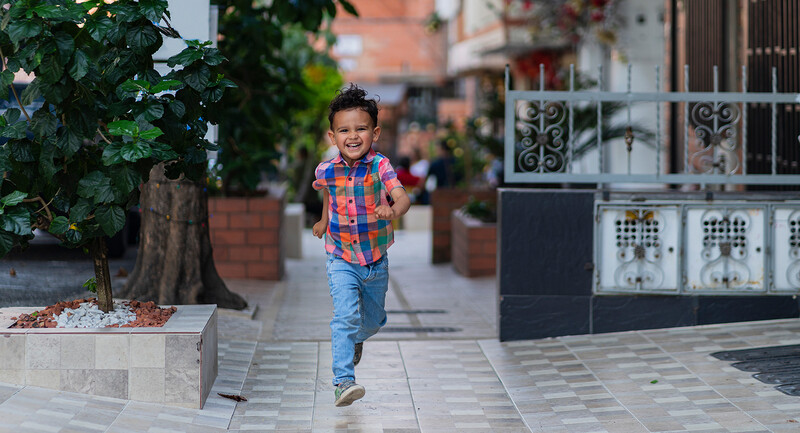In a 1998 interview with , Educational Leadership,, Rabbi Harold Kushner noted a pattern among successful people who overcame obstacles in their lives. When asked, "How did you get to be who you are?", Kushner said, "The answer will always begin with the same four words: 'There was this teacher …'" (Scherer, 1998, p. 22).
As children enter school, the adults there become a part of their web of support. "There was this teacher … " can become a crucial part of the story adolescents tell about themselves.
The influence of teacher-student relationships on learning is well documented. The effect size of positive relationships on achievement (the statistically calculated strength of the effect this factor has on student learning) is 0.52, above the 0.40 average effect size associated with a year's worth of growth for a year in school (Hattie, 2018). In other words, these relationships can accelerate learning. For adolescents, who regularly encounter a dozen or more adults across their school day, these relationships extend both in and out of the classroom.
The Characteristics of Caring
Positive teacher-student relationships shouldn't be confused with friendships. Adolescent peer friendships are essential, but we aren't their peers. Teen students need something different from us. Markers of strong teacher-student relationships include:
Relatedness : showing interest in the student's life.
Structure : creating fair and consistent expectations and rules that govern school and classroom interactions.
Autonomy : providing choice and opportunities to make decisions that matter.
Optimism : infusing into communications with students our belief in them as capable learners—and as people.
Emotional support : acknowledging feelings and assisting students in processing their emotions.
Warmth and personal regard are crucial, but not sufficient. Teachers should be "warm demanders," insistent about performance and effort. Bondy and Ross (2008) describe warm demanders as teachers who communicate to students that acting with mutual respect and perseverance (both academically and behaviorally) is nonnegotiable, while also providing positive supports. (We remind our own students that "we bug because we care.") While they use humor and warmth in their interactions, warm demanders are clear about their expectations. That uniform insistence on excellence is a form of academic press that can permeate a school.
Social Capital in Schools
Many of us have had the good fortune to see one warm demander in action. But when many teachers use this approach, it forms a collective culture of achievement that lifts the fortunes of all. When the academic press of the entire school is evident, students benefit from the social capital of association with that school. As Salloum, Goddard, and Larsen (2017) note, social capital "suggest[s] that people and groups may invest in and prosper from their social connections … social capital refers to the resources embedded in relationships" (p. 2). Social capital generates good feelings about the self and others, and it promotes motivation and commitment. It leads to desirable academic outcomes, including achievement, high school graduation, and enrollment in postsecondary schooling. Among the measures of social capital in schools is the degree to which teachers and students trust one another, students perceive the school learning environment as supportive and challenging, and students care for one another.
However, Salloum and her colleagues' 2017 study of 96 high schools found that socioeconomic status and past academic achievement in reading and mathematics influenced the degree to which students benefited—or didn't—from the social capital of the school they attended. Students with higher achievement scores and socioeconomic status enjoyed greater access to social capital than those who struggled academically or lived in poverty.
These findings highlight a problem all educators share. Each of us can name the many positive relationships we've had with students over the course of our careers. But have we overlooked students who are harder to reach—often underachieving or marginalized kids—who could most benefit from being invited daily into the learning process?
Invitational Education
An invitation is an action that encourages participation in an event; a disinvitation discourages a person from participating. The tone of a school is felt in the many communications and interactions—whether invitations to learn or subtle disinvitations—that occur from the moment one enters the environment. Stanley, Juhnke, and Purkey (2011) assert that for a school to be truly invitational to all, five essential components of the school must have specific positive qualities and must align together: people, places, processes, programs, and policies.
Let's look closer at the "people" component. Stanley and her colleagues state that the people involved in an invitational learning environment must be trusting, caring, respectful, optimistic, accessible, courteous, and intentional in their outreach to students. The video accompanying this column focuses on Demetrius Davenport, an educator at Health Sciences High and Middle College who manifests these qualities in his interactions with students in and out of classrooms.
Mr. Davenport isn't a classroom teacher, but a member of the student support team charged with spearheading restorative practices at the school. Notice his deliberate, warm, upbeat greetings to students as they enter the school, often including their name or a personalized comment. As Dean of Students, he is tasked with responding when students misbehave. He knows that having good relationships with all students will serve him well if he has to intervene. Mr. Davenport embodies the collective commitment of this school's faculty and staff to ensure that every student, especially hard-to-reach students, experiences positive relationships each day.
Make the Investment
Teacher-student relationships can't be left to chance. They are critical for student learning and outcomes. Nor should the responsibility for fostering them be confined to those who teach a formal subject. The collective interactions we have with students convey to them their importance to us, and to the world. By investing in relationships in an intentional, invitational way, we ensure that each student understands that he or she is able and valuable.
EL Magazine Show & Tell / May 2019








